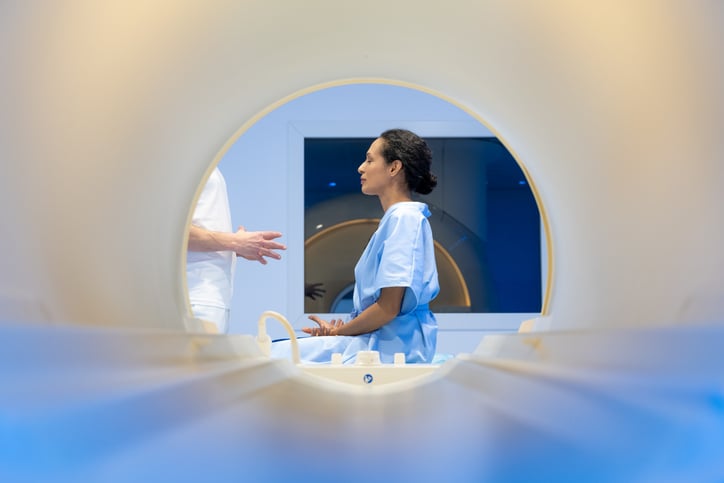
Getty Images
Investing in women’s health should not merely be a metric on the equity dashboard — it should drive policy and tactical interventions forward. The disparity in health outcomes between genders, compounded further by racial inequities, represents a significant portion of the overarching challenge of health inequality. This crisis, which undermines global endeavors to promote the welfare and advancement of communities, families and individuals, can only move toward a resolution with proper acknowledgment and targeted intervention.
Though recent observances, such as National Minority Health Month and Black Maternal Health Week, often serve as catalysts to amplify the call for enhanced health equity and inclusivity, making quality care available to everyone should be a year-round priority. Seizing the present moment, when the healthcare industry remains focused on equity due to these recent observances, is critical. It’s an opportune time to proactively work toward sustaining and amplifying the existing momentum.
Medical imaging, because of its position on the front lines of diagnoses, has a particularly unique role in mitigating healthcare inequity. Imaging practitioners possess an opportunity to rectify the disparities faced by women and minorities in accessing comprehensive healthcare.
A Persistent Discrepancy in Access
If timely and appropriate diagnostic care reduces healthcare disparities, the lack thereof does the opposite. For example, Black patients are 21% less likely to receive medical imaging services.¹ They also have shorter life expectancies (by almost 6 years) and 14% higher rates of cancer mortality than their white counterparts. Equitable access to comprehensive healthcare is particularly necessary during pregnancy. Yet, both infant mortality and maternal mortality for Black individuals is more than twice that of white members of the community.
The overall state of global women’s health is far from optimal. On average, a woman will spend nine years in poor health,² which is 25% more than men. Each year, the disparity in women’s health results in a loss of 75 million years of life due to illness or premature death, according to the World Economic Forum.³ The organization calculated that bridging this gap would give the world’s 3.9 billion women an additional week of good health annually, amounting to an average of 500 days throughout their lifetime.
In addition, a 2022 report published by UN Women and the UN Department of Economic and Social Affairs found that at the current pace of progress, gender equality will not be achieved by 2030,⁴ as originally intended with the United Nations’ Sustainable Development Goals. Continuing at this rate means it could take several centuries to reach the UN’s health equity goals. The consequences of a delay that size are literally deadly.
The Differences Better Care and Medical Imaging Could Make
Paying attention to women’s health presents an opportunity the healthcare industry can’t ignore. Addressing the gender equity gap could boost the global economy by $1 trillion annually by 2040,² saving the lives of countless women and children in the process.
Increased access to medical imaging services alone has a profound impact. An expansive National Center for Biotechnology Information study of the use of diagnostic technology to reduce fetal mortality⁵ indicates deployment of medical imaging in obstetrics is a vital tool in managing fetal health. The very introduction of ultrasound caused a significant drop in fetal mortality rates, according to the NCBI study, which found that ultrasound contributed to a reduction in fetal deaths of nearly 20%. For post‐term deliveries, the reduction was well over 50%. Such findings underscore the non-negotiable nature of medical imaging as a critical component of comprehensive healthcare.
From a financial standpoint, addressing the women’s health equity gap could bolster the global economy. The benefits of improved health and longer lives could enable up to 137 million women to take on full-time employment by 2040, according to a McKinsey Health Institute Report.² The earning power associated with that kind of transformative outcome could drastically reduce poverty’s stronghold in countless regions and globally empower women to support themselves and their families. However, eliminating the forces behind the gap — which the report identified as lower effectiveness of treatments for women, insufficient care delivery and lack of data — is easier said than done. The situation isn’t as simple as distributing more imaging units across challenged geographies.
Initiatives and Innovations Leading the Way
Radiologists play a pivotal role in driving change within the healthcare landscape. With their diagnostic and treatment expertise, they have the ability to lead collaborative efforts, promote patient education and foster engagement. Radiologists who leverage their positions can shape a more inclusive and fair healthcare system for the future. Fortunately, many are already moving in that direction.
Initiatives like the Radiology Health Equity Coalition⁶ are not only commendable, but also vital. This collaboration, which includes influential organizations like the American College of Radiology and the American Board of Radiology, demonstrates the industry’s recognition of the existing gap and a shared commitment to closing it.
Several of Intelerad’s partners strive to increase medical imaging accessibility worldwide. Notable among them are RadEqual, a nonprofit promoting opportunities in radiology and informatics for women, and Butterfly Network, which developed the world’s first handheld, whole-body ultrasound system. When organizations like these make strategic investments of time and resources that transcend geographic, ethnic and socioeconomic barriers, worldwide access to radiology services and overall care quality improves.
Additionally, diversity and health equity education and training should be integrated into the core curriculum of radiological studies, rather than offered as optional tracks or modules within residency programs. While individual efforts through volunteerism and advocacy are commendable, they alone cannot bridge the gap between disparity and equity.
Endeavoring to merge technology with equity presents an opportunity to redefine the culture of radiology-based care. Inclusivity must extend beyond inviting women and minorities into the healthcare narrative; it should empower them to take on leading roles in shaping their own health and wellness journeys.
As we continue raising awareness about observances like Women’s History Month, National Minority Health Month and Black Maternal Health Week, we remember these dates serve as more than calendar entries. They are rallying milestones, calling upon healthcare providers to continuously prioritize equitable care for all of us.

Jordan Bazinsky is the CEO of Intelerad. He most recently served as executive vice president at Cotiviti, delivering billions of dollars in measurable value for some of the largest stakeholders in the healthcare community. He has proven leadership experience in understanding the market, developing growth strategies, and scaling transformational healthcare companies, including: Cotiviti, Verscend, Verisk Health and The Advisory Board. He earned an MBA from Harvard University and a bachelor’s degree from Duke University, where he previously served on the Board of Trustees.
REFERENCES:
1. https://radiology.uci.edu/2022/02/28/black-history-month-imaging-disparities-faced-by-black-patients/. Accessed April 23, 2024.
2. https://www.mckinsey.com/mhi/our-insights/closing-the-womens-health-gap-a-1-trillion-dollar-opportunity-to-improve-lives-and-economies. Accessed April 23, 2024.
3. www.weforum.org Accessed April 23, 2024.
4. https://www.unwomen.org/en/news-stories/press-release/2022/09/press-release-achieving-full-gender-equality-is-still-centuries-away-warns-the-united-nations-in-a-new-report. Accessed April 23, 2024.
5. https://www.ncbi.nlm.nih.gov/pmc/articles/PMC6232411/. Accessed April 23, 2024.
6. https://www.radhealthequity.org/. Accessed April 23, 2024.


 December 10, 2025
December 10, 2025 









